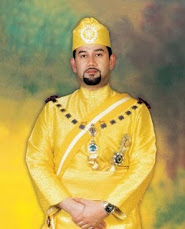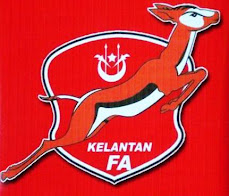UKM Dalam Memori..

UKM is a place where great men born. I love UKM and every moment I still remember my memory there. So here I upload a group of pieces my memorial photo for everyone view. Enjoying it...
Tanggal bulan Julai 2003 aku melangkah kaki ke sebuah IPTA yang sememangnya menjadi idaman aku dari bangku sekolah lagi. Seeingat aku, masa aku belajar di sekolah menengah lagi bapa saudara aku sudah menjadi salah seorang pelajar UKM ini. Setiap kali cuti semesta, pasti aku akan mendengar cerita dari bapa saudara aku bagaimana keseronokan belajar di universiti. Malah, aku juga melihat gambar-gambar bapa saudara aku dan sememangnya menyeronokkan dan menarik minat. Selapas itu, aku mula memasang angan-angan untuk belajar di universiti dan mula serius dalam pembelajaran dan akhirnya dengan berkat doa Ma dan Abah serta rezeki dari ALLAH S.W.T, aku berjaya menjadi mahasiswa UKM.
Harri pertama di UkM adalah memertkan kerana itulah kali pertama aku berjauhan dari Ma dan Abah aku. Biarpun aku diselubingi kesedihan, ada juga kegembiraan meenjadi seorang mahasiswa. Selama berada di UKM, pelbagai kenangan pahit, manis, masam, masin telah dilalui.
Maalah, aku hampir2 give-up semasa belajar di UKM. Namun, segala cabaran dilalui dan ditempuhi dengan sokongan keluarga dan rakan2 akhirnya kau berjaya bergelar graduan. He He. Alhamdulillah, aku dah keje pun skang.
Namun, apa yang aku rasa sekarrang adalah satu perasaan yang tidak dapat dibendung dan aku rasa semua orang pun merasainya. Iaitu simpton merindui UKM. Percayalah, setiap kali ada peluang (hari minggu), aku akan ke UKM sambul bersiar-siar dan menghidu udara segar UKM. Betapa aku merindui kolej Burhanudin Helmi, Fakulti Sains Sosial Kemanusiaan, tasik Kejut, dataran gemilang, PTSL, dan Dectar. Semua teempat-tempat ini memberikan kenangan yang banyak kepada kau samaada yang indah dan gundah. He he. Di sini adalah beberapa cebisan kenangan untuk dikongsi bersama dari aku first year di UKM hingga grad... Love u UKM....





















Pasar Besar Siti Khadijah @ Siti Khadijah General Market
Posted in
Labels:
world view
|
This original market name was Pasar Besar Buluh Kubu but was changed to Pasar Besar Siti Khadijah. This market situated in the center or Kota Bharu city at Kelantan state, Malaysia. This market had 4 stories and unique shape. In this market you can find any kind of foods (like dry food, for example- serunding, Ayam percik, ikan percik, nasi kerabu, nasi berlauk, nasi dagang, laksam dan somtam), fish, clothes, souvenirs stall and Malaysian traditional cookies. But, most unique thing about this market. All dealer here are women!!! Come and visit here and you can see yourself..












Great Pyramid of Giza
Posted in
Labels:
did u know,
world view
|
Pyramid of Giza (also called the Pyramid of Khufu and Pyramid of Cheops) is the oldest and largest of the three pyramids in the Giza Necropolis bordering what is now Cairo, Egypt, and is the only one of the Seven Wonders of the Ancient World that survives substantially intact. It is believed the pyramid was built as a tomb for Fourth dynasty Egyptian King Khufu (Cheops in Greek) and constructed over a 20 year period concluding around 2560 BC. The Great Pyramid was the tallest man-made structure in the world for over 3,800 years. Originally the Great Pyramid was covered by casing stones that formed a smooth outer surface, and what is seen today is the underlying core structure. Some of the casing stones that once covered the structure can still be seen around the base. There have been varying scientific and alternative theories regarding the Great Pyramid's construction techniques. Most accepted construction theories are based on the idea that it was built by moving huge stones from a quarry and dragging and lifting them into place.
There are three known chambers inside the Great Pyramid. The lowest chamber is cut into the bedrock upon which the pyramid was built and was unfinished. The so-called[1] Queen's Chamber and King's Chamber are higher up within the pyramid structure. The Great Pyramid of Giza is the main part of a complex setting of buildings that included two mortuary temples in honor of Khufu (one close to the pyramid and one near the Nile), three smaller pyramids for Khufu's wives, an even smaller "satellite" pyramid, a raised causeway connecting the two temples, and small mastaba tombs surrounding the pyramid for nobles.


Great Pyramid of Giza from a 19th century stereopticon card photo
Building The Pyramid
It is believed the pyramid was built as a tomb for Fourth dynasty Egyptian pharaoh Khufu and constructed over a 14[2] to 20 year period concluding around 2560 BC.[3] Khufu's vizier, Hemon, or Hemiunu, is believed by some to be the architect of the Great Pyramid.[4] It is thought that, at construction, the Great Pyramid was originally 280 Egyptian cubits tall, 146.6 meters, (480.97 feet, or about 40 stories) but with erosion and the loss of its pyramidion, its current height is 138.8 m (455 feet). Each base side was 440 royal cubits, 230.5 meters in length, (756.2 feet). A royal cubit measures 0.524 meters.[5] The total mass of the pyramid is estimated at 5.9 million tonnes. The volume, including an internal hillock, is believed to be roughly 2,500,000 cubic meters.[6] Based on these estimates, building this in 20 years would involve installing approximately 800 tonnes of stone every day. The first precision measurements of the pyramid were done by Egyptologist Sir Flinders Petrie in 1880–82 and published as The Pyramids and Temples of Gizeh.[7] Almost all reports are based on his measurements. Many of the casing stones and interior chamber blocks of the great pyramid were fit together with extremely high precision. Based on measurements taken on the north eastern casing stones, the mean opening of the joints are only 0.5 millimeters wide (1/50th of an inch).[8]
The pyramid remained the tallest man-made structure in the world for over 3,800 years,[9] unsurpassed until the 160 meter tall spire of Lincoln Cathedral was completed c. 1300. The accuracy of the pyramid's workmanship is such that the four sides of the base have a mean error of only 58 millimeter in length [10] The base is horizontal and flat to within 15 mm. The sides of the square base are closely aligned to the four cardinal compass points (within 4 minutes of arc)[11] based on true north, not magnetic north[12], and the finished base was squared to a mean corner error of only 12 seconds of arc[13]. The completed design dimensions, as suggested by Petrie's survey and later studies, are estimated to have originally been 280 cubits in height by 440 cubits in length at each of the four sides of its base. These proportions equate to π/2 to an accuracy of better than 0.05% (corresponding to the approximation of π as 22/7). Some Egyptologists consider this to have been the result of deliberate design proportion[14]. Verner wrote, "We can conclude that although the ancient Egyptians could not precisely define the value of π, in practise they used it".[15] Petrie, author of ‘The Pyramids and Temples of Gizeh', who was the first accurate surveyor of Giza and the excavator and surveyor of the Pyramid of Meidum, concluded: "but these relations of areas and of circular ratio are so systematic that we should grant that they were in the builders design".[16] Earlier in the chapter he wrote more specifically, that: “We conclude therefore that the approximation of 7 to 22 as the ratio of diameter to circumference was recognised”.[17] These proportions equated to the four outer faces sloping by approximately 51.842º or 51º 50' 35", which would have been understood and expressed by the Ancient Egyptians as a seked slope of 5 1/2 palms [18].
Materials
The Great Pyramid consists of more than 2.3 million limestone blocks. The Egyptians obtained the majority of the limestone blocks from a nearby quarry. The Tufa limestone used for the casing was quarried across the river. The largest granite stones in the pyramid, found in the "King's" chamber, weigh 25 to 80 tonnes and were transported more than 500 miles away from Aswan. Traditionally, ancient Egyptians cut stone blocks by hammering wedges into the stone which were then soaked with water. The wedges expanded, causing the rock to crack. Once they were cut, they were carried by boat either up or down the Nile River to the pyramid. [19]
Casing stones
At completion, the Great Pyramid was surfaced by white 'casing stones' – slant-faced, but flat-topped, blocks of highly polished white limestone. These were carefully cut to what is approximately a face slope with a seked of 5 1/2 palms to give the required overall dimensions. Visibly, all that remains is the underlying step-pyramid core structure seen today. In AD 1301, a massive earthquake loosened many of the outer casing stones, which were then carted away by Bahri Sultan An-Nasir Nasir-ad-Din al-Hasan in 1356 in order to build mosques and fortresses in nearby Cairo. The stones can still be seen as parts of these structures to this day. Later explorers reported massive piles of rubble at the base of the pyramids left over from the continuing collapse of the casing stones, which were subsequently cleared away during continuing excavations of the site. Nevertheless, many of the casing stones can be seen to this day in situ around the base of the Great Pyramid, and display the same workmanship and precision as has been reported for centuries. Petrie also found a different orientation in the core and in the casing measuring 193 centimeters ± 25 centimeters. He suggested a redetermination of north was made after the construction of the core, but a mistake was made, and the casing was built with a different orientation.[20] Petrie related the precision of the casing stones as to being "equal to opticians' work of the present day, but on a scale of acres." and "to place such stones in exact contact would be careful work; but to do so with cement in the joints seems almost impossible."[21]
Construction Theories
Main article: Egyptian pyramid construction techniques
Many alternative, often contradictory, theories have been proposed regarding the Pyramid's construction techniques.[22] Not all even agree that the blocks were quarried, they might conceivably have been cast[citation needed]. However, most accept it was built by moving huge stones from a quarry, being only unable to agree whether they were dragged, lifted or even rolled into place. The Greeks believed that slave labour was used but modern Egyptologists accept that it was built by many tens of thousands of skilled workers. They camped near the pyramids and worked for a salary or as a form of paying taxes until the construction was completed.[citation needed] Their cemeteries were discovered in 1990 by archaeologists Zahi Hawass and Mark Lehner. Verner posited that the labor was organized into a hierarchy, consisting of two gangs of 100,000 men, divided into five zaa or phyle of 20,000 men each, which may have been further divided according to the skills of the workers.[23]
One of the mysteries of the pyramid's construction is how they planned its construction. John Romer suggests that they used the same method that had been used for earlier and later constructions, laying out parts of the plan on the ground at a 1 to 1 scale. He writes that "such a working diagram would also serve to generate the architecture of the pyramid with a precision unmatched by any other means." He devotes a chapter of his book to the physical evidence that there was such a plan.[24]
.svg.png)
For Further Information about this great pyramid, please don't shy and visit http://en.wikipedia.org/wiki/Great_Pyramid_of_Giza.(Evrythings great there)
P/S- Information taken from very thanks to http://en.wikipedia.org.
There are three known chambers inside the Great Pyramid. The lowest chamber is cut into the bedrock upon which the pyramid was built and was unfinished. The so-called[1] Queen's Chamber and King's Chamber are higher up within the pyramid structure. The Great Pyramid of Giza is the main part of a complex setting of buildings that included two mortuary temples in honor of Khufu (one close to the pyramid and one near the Nile), three smaller pyramids for Khufu's wives, an even smaller "satellite" pyramid, a raised causeway connecting the two temples, and small mastaba tombs surrounding the pyramid for nobles.


Great Pyramid of Giza from a 19th century stereopticon card photo
Building The Pyramid
It is believed the pyramid was built as a tomb for Fourth dynasty Egyptian pharaoh Khufu and constructed over a 14[2] to 20 year period concluding around 2560 BC.[3] Khufu's vizier, Hemon, or Hemiunu, is believed by some to be the architect of the Great Pyramid.[4] It is thought that, at construction, the Great Pyramid was originally 280 Egyptian cubits tall, 146.6 meters, (480.97 feet, or about 40 stories) but with erosion and the loss of its pyramidion, its current height is 138.8 m (455 feet). Each base side was 440 royal cubits, 230.5 meters in length, (756.2 feet). A royal cubit measures 0.524 meters.[5] The total mass of the pyramid is estimated at 5.9 million tonnes. The volume, including an internal hillock, is believed to be roughly 2,500,000 cubic meters.[6] Based on these estimates, building this in 20 years would involve installing approximately 800 tonnes of stone every day. The first precision measurements of the pyramid were done by Egyptologist Sir Flinders Petrie in 1880–82 and published as The Pyramids and Temples of Gizeh.[7] Almost all reports are based on his measurements. Many of the casing stones and interior chamber blocks of the great pyramid were fit together with extremely high precision. Based on measurements taken on the north eastern casing stones, the mean opening of the joints are only 0.5 millimeters wide (1/50th of an inch).[8]
The pyramid remained the tallest man-made structure in the world for over 3,800 years,[9] unsurpassed until the 160 meter tall spire of Lincoln Cathedral was completed c. 1300. The accuracy of the pyramid's workmanship is such that the four sides of the base have a mean error of only 58 millimeter in length [10] The base is horizontal and flat to within 15 mm. The sides of the square base are closely aligned to the four cardinal compass points (within 4 minutes of arc)[11] based on true north, not magnetic north[12], and the finished base was squared to a mean corner error of only 12 seconds of arc[13]. The completed design dimensions, as suggested by Petrie's survey and later studies, are estimated to have originally been 280 cubits in height by 440 cubits in length at each of the four sides of its base. These proportions equate to π/2 to an accuracy of better than 0.05% (corresponding to the approximation of π as 22/7). Some Egyptologists consider this to have been the result of deliberate design proportion[14]. Verner wrote, "We can conclude that although the ancient Egyptians could not precisely define the value of π, in practise they used it".[15] Petrie, author of ‘The Pyramids and Temples of Gizeh', who was the first accurate surveyor of Giza and the excavator and surveyor of the Pyramid of Meidum, concluded: "but these relations of areas and of circular ratio are so systematic that we should grant that they were in the builders design".[16] Earlier in the chapter he wrote more specifically, that: “We conclude therefore that the approximation of 7 to 22 as the ratio of diameter to circumference was recognised”.[17] These proportions equated to the four outer faces sloping by approximately 51.842º or 51º 50' 35", which would have been understood and expressed by the Ancient Egyptians as a seked slope of 5 1/2 palms [18].
Materials
The Great Pyramid consists of more than 2.3 million limestone blocks. The Egyptians obtained the majority of the limestone blocks from a nearby quarry. The Tufa limestone used for the casing was quarried across the river. The largest granite stones in the pyramid, found in the "King's" chamber, weigh 25 to 80 tonnes and were transported more than 500 miles away from Aswan. Traditionally, ancient Egyptians cut stone blocks by hammering wedges into the stone which were then soaked with water. The wedges expanded, causing the rock to crack. Once they were cut, they were carried by boat either up or down the Nile River to the pyramid. [19]
Casing stones
At completion, the Great Pyramid was surfaced by white 'casing stones' – slant-faced, but flat-topped, blocks of highly polished white limestone. These were carefully cut to what is approximately a face slope with a seked of 5 1/2 palms to give the required overall dimensions. Visibly, all that remains is the underlying step-pyramid core structure seen today. In AD 1301, a massive earthquake loosened many of the outer casing stones, which were then carted away by Bahri Sultan An-Nasir Nasir-ad-Din al-Hasan in 1356 in order to build mosques and fortresses in nearby Cairo. The stones can still be seen as parts of these structures to this day. Later explorers reported massive piles of rubble at the base of the pyramids left over from the continuing collapse of the casing stones, which were subsequently cleared away during continuing excavations of the site. Nevertheless, many of the casing stones can be seen to this day in situ around the base of the Great Pyramid, and display the same workmanship and precision as has been reported for centuries. Petrie also found a different orientation in the core and in the casing measuring 193 centimeters ± 25 centimeters. He suggested a redetermination of north was made after the construction of the core, but a mistake was made, and the casing was built with a different orientation.[20] Petrie related the precision of the casing stones as to being "equal to opticians' work of the present day, but on a scale of acres." and "to place such stones in exact contact would be careful work; but to do so with cement in the joints seems almost impossible."[21]
Construction Theories
Main article: Egyptian pyramid construction techniques
Many alternative, often contradictory, theories have been proposed regarding the Pyramid's construction techniques.[22] Not all even agree that the blocks were quarried, they might conceivably have been cast[citation needed]. However, most accept it was built by moving huge stones from a quarry, being only unable to agree whether they were dragged, lifted or even rolled into place. The Greeks believed that slave labour was used but modern Egyptologists accept that it was built by many tens of thousands of skilled workers. They camped near the pyramids and worked for a salary or as a form of paying taxes until the construction was completed.[citation needed] Their cemeteries were discovered in 1990 by archaeologists Zahi Hawass and Mark Lehner. Verner posited that the labor was organized into a hierarchy, consisting of two gangs of 100,000 men, divided into five zaa or phyle of 20,000 men each, which may have been further divided according to the skills of the workers.[23]
One of the mysteries of the pyramid's construction is how they planned its construction. John Romer suggests that they used the same method that had been used for earlier and later constructions, laying out parts of the plan on the ground at a 1 to 1 scale. He writes that "such a working diagram would also serve to generate the architecture of the pyramid with a precision unmatched by any other means." He devotes a chapter of his book to the physical evidence that there was such a plan.[24]
.svg.png)
For Further Information about this great pyramid, please don't shy and visit http://en.wikipedia.org/wiki/Great_Pyramid_of_Giza.(Evrythings great there)
P/S- Information taken from very thanks to http://en.wikipedia.org.
Happy Deepavali..
Posted in
Labels:
event
|

I wish to all Hindu people especially in my country (Malaysia) Happy Deepavali on this 17th October 2009.. Colour your house with light of diwali. Wish yo'll Happy Calebrating
Promosi Wakaf @ Pangkin Model Baru..
Posted in
Labels:
armanizan
|
Dibuat dengan kayu meranti, dengan hasil kerja halus, harga sekitar RM 8500 sahaja. Berminat boleh hubungi talian 0146662098. Tempahan diterima sekitar Kota Bharu, Pasir MAs, Besut, Bachok, Pengkalan Chepa. Kawasan sekitar Kelantan, Terngganu, Selangor, Pahang. Maklumat lanjut boleh didapati di http://arthandicraftsabak.blogspot.com.




Sek Men Kemumin Dalam Ingatan...
Posted in
Labels:
armanizan
|
Sekolah Men. Keb Kemumin adalah tempat aku meyambung perjuangan aku dalam menjadi seorang manusia. Aku masuk ke sekolah ini pada tahun 1997 di tingkatan 1B. Apa yang specialnya sekolah ini ialah semua adik beradik aku dari kakak aku yang sulung, kakak aku no2, aku dan adik aku yang bongsu semua menuntut ilmu disini. Biarpun sudah 8 tahun aku meninggalkan sekolah ini, namun aku masih mengingati jasa guru-guru yang masih lagi ada di sana.
Kebetulan hari tu adik aku ada menunjukkan gambar terbaru sekolah Kemumin dan aku lihat gur0guru yang pernah mengajar aku masih ada lagi. Mereka seperti Ustaz Ghafar (mengajar Pend. Islam), Pn Sabariah (BM), En Zainuddin Sains), En Wan Din (KH),Pn Hjh Norazlini(Matematik), Ustah Norizan (Pend. Islam), Ph Hashimah (Geog, En Othman (Matematik dgn PJ),Pn Salmi (Pend Seni). Mungkin ada yang aku terlupa sebut kerana nama-nama ini lah yang ada dalam simpanan adik aku.
Kepada cikgu-cikgu yang mengenali saya dan pernah mengajar saya, saya Mohd Arman Arifin memohon maaf dan ampun kepada semua guru kerana saya banyak membuat salah dan silap sepanjang menjadi pelajar di sana. Saya tahu, saya banyak membuat salah dan meminta dihalalkan segala ilmu yang diperturunkan kepada saya. Terima kasih cikgu....
Gambar2 yang aku pow dari simpanan adikku



Kebetulan hari tu adik aku ada menunjukkan gambar terbaru sekolah Kemumin dan aku lihat gur0guru yang pernah mengajar aku masih ada lagi. Mereka seperti Ustaz Ghafar (mengajar Pend. Islam), Pn Sabariah (BM), En Zainuddin Sains), En Wan Din (KH),Pn Hjh Norazlini(Matematik), Ustah Norizan (Pend. Islam), Ph Hashimah (Geog, En Othman (Matematik dgn PJ),Pn Salmi (Pend Seni). Mungkin ada yang aku terlupa sebut kerana nama-nama ini lah yang ada dalam simpanan adik aku.
Kepada cikgu-cikgu yang mengenali saya dan pernah mengajar saya, saya Mohd Arman Arifin memohon maaf dan ampun kepada semua guru kerana saya banyak membuat salah dan silap sepanjang menjadi pelajar di sana. Saya tahu, saya banyak membuat salah dan meminta dihalalkan segala ilmu yang diperturunkan kepada saya. Terima kasih cikgu....
Gambar2 yang aku pow dari simpanan adikku



Pantai Sabak Dalam Memori...
Posted in
Labels:
armanizan
|
Pantai sabak merupakan sebuah pantai yang terletak 18Km dari Kota Bharu. Pantai Sabak menjadi terkenal kerana pada tanggal 08.12.194, tentera Jepun telah melakukan pendaratan yang pertamanya dalam misi 'Asia Untuk Asia'nya. Kedatangan tentera Jepun seramai 5600 orang dibawah pimpinan General Takumi ini menjadi titik permulaan kepada kemasukan ribuan lagi tentera negara matahari terbit itu ke Tanah Melayu. Kedatangan tentera Jepun menandakan kelemahan kuasa British di Tanah Melayu dan menjadi suntikan semangat yang mendorong penduduk Tanah Melayu bangun berjuang menentang penjajahan.

Pantai Sabak dikenali pada suatu masa dulu kerana menjalankan kegiatan perikanan secara tradisional. Nelayan-nelayan disini pada masa dahulu ke laut dengan menaiki bot-bot kecil dan menggunakan enjin yang berkuasa rendah.
Uniknya, seingat aku nelayan di Pantai Sabak ini berbanding nelayan di tempat lain ialah mereka mewarnakan dan mengecat perahu mereka dengan ukiran-ukiran yang menarik dan menamakan perahu mereka dengan pelbagai ragam nama. Biasanya, nelayan di Pantai Sabak akan turun selepas subih atau kadang-kadang sebelum subuh lagi ke laut. Bila petang, isteri-isteri dan anak-anak kecil akan menunggu kepulangan mereka. Jikalau hari itu ribut, semua pasti akan berada dalam kerisauan mengenangkan nyawa nelayan di laut yang sedang bertarung dengan bahaya.
Bila sampai sahaja, ikan-ikan yang ditangkap akan diusung terlebih dahulu ke pantai dan dikerumuni oleh peraih atau pembeli. Kemudian, perahu-perahu nelayan Pantai Sabak akan ditarik naik ke pantai dan dilapik dengan galang (kayu yang berbentuk bulat, perahu bergolek di atasnya). Kemudian buluh diikat pada atas perahu dan ditolak beramai-ramai. Waktu itu, suasana cukup hingar bingar tetapi ianya menyeronokkan dan sungguh noslagic. Waktu aku kecil, aku selalu menyibuk semasa orang-orang dewasa menolak perahu. Jika tidak ke laut (hari Jumaat), nelayan Pantai Sabak akan beramai-ramai duduk di atas wakaf dan menjahit pukat sambil berborak-borak. Pada masa itu aku selalulah jugak mengikuti arwak abah aku menjahit pukat.


Tapi semua itu sudah manjadi kenangan yang sudah tidak dapat dilalui lagi. Pantai Sabak yang dahulunya antara tercantik di Kelantan sudah tiada lagi. Ianya sudah berbatubatu dimamah ombak. Kini yang tinggal hanyalah pantai yang sudah ditambak dengan batu. Sekarang, perahu tidak lagi ditarik ke pantai tetapi diparking di dalam tali air buatan manusia. Tiada lagi pantai untuk kanak-kanak bermain, menangkap ketam atau mandi manda. Semua kawan-kawan arwah abah aku juga sudah ramai yang menghadap Ilahi. Hilang dimuka bumi Sabak seumpana Pantai Sabak dimamah ombak. Semua ini adalah ketentuan dari Allah S.W.T dan diterima dengan hari yang redha dan bersyukur kerana Pantai Sabak masih lagi dikenali dan diingati.
Pun begitu, walau apa jua keadaan geografi dan fizikalnya, Pantai Sabak tetap menjadi kampung halaman yang aku sentiasa ingati dan rindui. Bagi sesiapa yang ada memiliki gambar-gambar lama Pantai Sabak, sila email kan di armanizan@gmail.com agar dapat diuploadkan di sini untu kenangan dan tatapan bersama.




Pantai Sabak dikenali pada suatu masa dulu kerana menjalankan kegiatan perikanan secara tradisional. Nelayan-nelayan disini pada masa dahulu ke laut dengan menaiki bot-bot kecil dan menggunakan enjin yang berkuasa rendah.
Uniknya, seingat aku nelayan di Pantai Sabak ini berbanding nelayan di tempat lain ialah mereka mewarnakan dan mengecat perahu mereka dengan ukiran-ukiran yang menarik dan menamakan perahu mereka dengan pelbagai ragam nama. Biasanya, nelayan di Pantai Sabak akan turun selepas subih atau kadang-kadang sebelum subuh lagi ke laut. Bila petang, isteri-isteri dan anak-anak kecil akan menunggu kepulangan mereka. Jikalau hari itu ribut, semua pasti akan berada dalam kerisauan mengenangkan nyawa nelayan di laut yang sedang bertarung dengan bahaya.
Bila sampai sahaja, ikan-ikan yang ditangkap akan diusung terlebih dahulu ke pantai dan dikerumuni oleh peraih atau pembeli. Kemudian, perahu-perahu nelayan Pantai Sabak akan ditarik naik ke pantai dan dilapik dengan galang (kayu yang berbentuk bulat, perahu bergolek di atasnya). Kemudian buluh diikat pada atas perahu dan ditolak beramai-ramai. Waktu itu, suasana cukup hingar bingar tetapi ianya menyeronokkan dan sungguh noslagic. Waktu aku kecil, aku selalu menyibuk semasa orang-orang dewasa menolak perahu. Jika tidak ke laut (hari Jumaat), nelayan Pantai Sabak akan beramai-ramai duduk di atas wakaf dan menjahit pukat sambil berborak-borak. Pada masa itu aku selalulah jugak mengikuti arwak abah aku menjahit pukat.


Tapi semua itu sudah manjadi kenangan yang sudah tidak dapat dilalui lagi. Pantai Sabak yang dahulunya antara tercantik di Kelantan sudah tiada lagi. Ianya sudah berbatubatu dimamah ombak. Kini yang tinggal hanyalah pantai yang sudah ditambak dengan batu. Sekarang, perahu tidak lagi ditarik ke pantai tetapi diparking di dalam tali air buatan manusia. Tiada lagi pantai untuk kanak-kanak bermain, menangkap ketam atau mandi manda. Semua kawan-kawan arwah abah aku juga sudah ramai yang menghadap Ilahi. Hilang dimuka bumi Sabak seumpana Pantai Sabak dimamah ombak. Semua ini adalah ketentuan dari Allah S.W.T dan diterima dengan hari yang redha dan bersyukur kerana Pantai Sabak masih lagi dikenali dan diingati.
Pun begitu, walau apa jua keadaan geografi dan fizikalnya, Pantai Sabak tetap menjadi kampung halaman yang aku sentiasa ingati dan rindui. Bagi sesiapa yang ada memiliki gambar-gambar lama Pantai Sabak, sila email kan di armanizan@gmail.com agar dapat diuploadkan di sini untu kenangan dan tatapan bersama.



HaPPy BiRtHdaY mY FiaNcE..
Posted in
Labels:
armanizan
|
Dalam Blog kami ini, aku ingin mengucapkan selamat menyambut hari ulang tahun kelahiran kepada tunang yang aku kasihi. Selamat Hari Jadi Sayangku.. Abg doakan Ayg panjang umur dan murah rezeki selalu.. Moga kita akan berbahagia dan berkekalan dengan hubungan kita dirahmati Allah S.W.T..
Selamat Menempuh Peperiksaan. Exam Battle!!
Posted in
Labels:
armanizan
|

Today is a day of battle for my ex-student because today they need to face thier this year 'biggest enemy'. So, I hope they will survive, pass this exam and will get great result. Gud Luck my student...
Selamat menempuh peperiksaan diucapkan kepada semua pelajar yang akan menghadapi peperiksaan PMR hari ini (7.10.09). Aku doakan kepada mereka yang terlibat agar buat dengan terbaik. Malam tadi, seorang pelajar aku (Mat Cat) telefon minta aku doakan mereka dapat menjawab peperiksaan dengan baik. Cikgu doakan agar kamu semua dapat menjawab dengan baik dan betul. Cikgu doakan semua ex-student 2UKM dulu dapat menghabiskan 'peperangan' mereka ini dan memperolehi result yang gempak punye...
Aidilfitri Yang Mengembirakan...
Posted in
Labels:
armanizan
|
Hari RAya Aidlfitri 2009 adalah hari raya yang paling memenatkan dan paling sibuk. Namun, tahun adalah paling gembira kerana aku sempat berbuka puasa di rumah bersama keluarga. Tahun ni aku balik malam 19hb iaitu dua hari sebelum raya. Maka, sempatlah aku beraya berbuka puasa bersama keluarga. Seronok.. kerana tahun lepas (2008) aku tidak dapat merasai kenikmatan berbuka bersama keluarga kerana bas yang aku naik pagi hari sebelum raya telah rosak di sebuah kampung dekat Kuala Krai. Aku terpaksa naik teksi ke bandar Machang dan naik teksi lagi sekali ke Kota Bharu dan naik kereta lagi sekali nak balik ke rumah. Dekat jam 10.30 malam raya aku sampai rumah. Itu tahun lepas punye cerita la.. Tahun ni Alhamdulillah, syuku pada ALLAH S.W.T kerana aku dapat jugak samapai awal,..
Dedicated pic from my son of fruit


Dedicated pic from my son of fruit


A New House..
Posted in
Labels:
armanizan
|
Finally, after one year struggle in tiny room (make my brain also become tiny), i already move to new house which shared with other two my friends. So, now i can live peacefully and have added more space in my brain. Ha ha.


Subscribe to:
Posts (Atom)
















